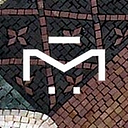Art as an activism tool
Throughout history, art has been used (and abused) by both respective artists and ruling political regimes of the particular time period. During the war, artworks tend to become propaganda weapons, but also activism tools. This especially goes for the film (propaganda movies) and sculptures (monuments, busts). However, mosaic art is up there too, its permanence making it the perfect instrument of political regimes all over the world. Needless to say, that medal has its other side as well, so it has been used by activists too.
See, when you think of activism you usually think of it as an action taken to right a wrong that is currently happening. In this age of political correctness and wokeness, we are witnesses to an array of activists with a variety of approaches. Some choose to practice their right to free speech on their considerable social media platforms and outlets, while others take the streets and social events in different ways. Some opt to open public debates on stages in pars and social centers, while others do it quietly and create artworks on those same streets under the veil of the night. Some activism happens spontaneously and acutely, while some are given much thought and planning before it hits the mark.
One of my personal favorites, the artist that manages to always bring out the appropriate emotion and reaction through his activist art is most definitely Edgar Heap of Birds. His artworks include public art messages, Neuf Series acrylic paintings, large-scale drawings, works in glass, prints, etc. His every artwork is an example of in-your-face activism entwined with his amazing talent and love for art.
Kim Werker’s famous Ugly Doll project, which eventually turned into an awesome book, is also a fine example of art and activism coming together to bring awareness to what can only be described as a global body-mind-soul positivity movement. In this age of the hypocrisy of the modeling industry, (so-called) Reality TV, and (of course) political correctness, Werker decided to make something outstandingly ugly. Reminding the world that both ugliness and beauty are a matter of one’s perception is always a good thing.
Sometimes activistic art starts almost unintentionally and that’s what seemingly happened with Nan Goldin’s life portraying photography. She began photographing scenes from her personal life in 1980 and managed to capture and highlight different aspects of the LGBTQ community, as well as bring awareness to the opioid crisis and AIDS epidemic.
L. J. Roberts’ Queer craft project is also an artistic example of bringing awareness to some problems that queer, gender non-conforming, and non-binary groups face. Using handcrafts and knitted artwork to explore the ideas of marginality is a unique approach to the topic, that keeps impressing art enthusiasts and the public from around the world.
Keeping all of that in mind and considering the fact that mosaic art is 3,500 years old, one might come to a conclusion that the two — activism and mosaic- don’t really go together, right? Well… wrong. Pen-minded and strong-willed artists from all parts of the globe have been proving that theory wrong for a while now. Mosaic art might be eternal, but that doesn’t mean that it can’t be used to prove momentary points. Just ask Carrie Reichardt.
We’ve briefly mentioned her in one of our previous articles, but her magnum opus deserves much more attention. Carrie Reichardt uses murals, graphic design, and screen-printing to serve us her stance on a variety of social, political, and economic topics. One of her most famous artworks is The Tiki Love Truck, created in 2007. This amazing artwork is a mobile mosaic mausoleum dedicated to the memory of Reichardt’s friend, a death-row inmate, Josh Joe ‘Ash’ Amador. After witnessing his execution, Carrie and Nick Reynolds took Amador’s body to a cabin in the woods where Reynolds cast his death mask. Ten days after that The Tiki Love truck was first shown on the streets of Manchester with Ash’s death mask on top. The mosaic masterpiece was awarded The Makeover prize, for the most impressive or original applied decoration or feature.
In 2011, Reichardt took part in the Fine Form Horse Parade celebrating the 100th anniversary of the Cheltenham Parade. Ten life-size resin horses were made for ten respective artists to decorate, and Reichardt and the sculptor Nick Reynolds made their horses’ heads into a skull, while the body was covered in a mosaic depicting the history of horses and the atrocities they have suffered at the hands of men. These are just some of Reichardt’s activist mosaic artworks and I’m sure that more will come in these challenging times we’re in.
Over at Tate Galleries, the activist art is described as a “form of political and social currency, actively addressing cultural power structures rather than representing them or simply describing them”. That is quite true, but don’t forget that it is almost always deeply personal for the artists themselves.
This article was originally published on Mosaics Lab’s website.
